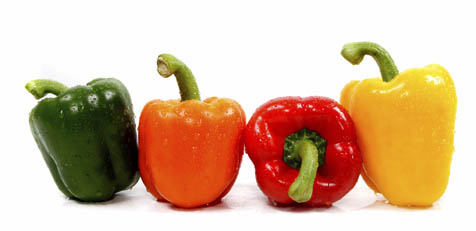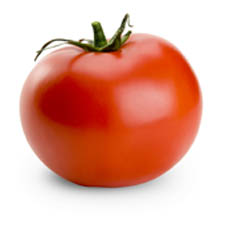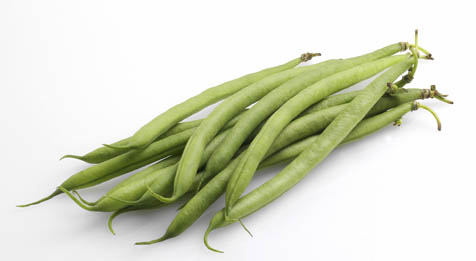Homegrown Crops from Your Garden
The Tastes of Summer

Even if our coastal gardens are tottering along toward summer under the morning fogs, interior valley gardens are busting out with all the most flavorful summer crops. Very sweet corn, luscious peaches, plums, nectarines, and apricots, and many others are showing up in supermarket bins. Even better tasting, though, are the fruits and vegetables that are grown to perfection not for the mass market but as close to home as possible. If you buy from area growers, the produce has so little distance to travel to your table that it is possible to enjoy fruits and vegetables harvested at the peak of flavor and texture. Homegrown produce is even fresher, coming directly from the garden to the kitchen with maximum vitamins, color, and flavor.
Connoisseurs of good food know it isn’t just about how you prepare a dish, but also the quality of ingredients used. In a world increasingly turning to mass-produced and gene-altered food products, gourmet cooks are turning to their own gardens for more healthy alternatives-organically grown and freshly harvested. Here are some of the vegetables that could be coming to your table from your own garden through the coming summer months.

Commercially grown tomatoes are the ultimate taste disappointment. So it’s no wonder they are the most popular vegetable for home gardens. If you’ve ever had a good tomato, you won’t ever want a mediocre one again. It’s not too late to plant tomatoes and you will find a wider selection of varieties than you will ever see at the supermarket. Many nurseries and home gardening centers have plants in bloom and even in fruit to pop into your garden. Our summer lasts well into September, and some years even later, giving tomatoes at least three months to deliver up their heavenly bounty.
Sweet corn used to be another summer treat best grown at home. Recently developed cultivars delay the inevitable conversion of sugars to starches for days at a time now, so that old rule of rushing the ears from the stalk to the pot in minutes no longer applies. Corn also takes up a lot of space, so unless you have a large area to devote to your garden, you can probably dispense with planting corn. If you want to do so, make successive plantings at weekly intervals or plant early and late varieties to extend the harvest. You will have perfectly crunchy, sweet corn on the cob for your Labor Day barbecue. And it’s still best to get the harvest into the pot as soon as possible for maximum flavor.
You can probably still find a juicy sweet melon in the store, but you may have to thump or sniff a dozen to detect that single one that was harvested at its peak of sweet succulence. Melons do require some space, but most types now have selections that form compact bushes instead of sprawling vines. Even modest gardens may find room for one or two hills. At this point in the season, it will be best to buy plants instead of starting from seed.
Tasty peppers-from bells of all colors to hot and spicy jalape±os, haba±eros, and serranos-are well represented at the market. Since they travel well, even as fully ripe pods, they are a good value. However, if you want some of the more interesting and flavorful varieties, you should grow your own. If you can find plants, buy them; most nurseries will not have a great variety, so starting from seed is a must. Start immediately in small pots and put them in a warm spot to get them going quickly before transplanting into the garden.
Fresh herbs are a must in the gourmet kitchen. For the price of one small packet of a specialty herb, you can buy one or more living plants. Many varieties of basil, thyme, and sage can be readily found on the plant stand at the nursery for ready planting. Plant these, as well as dill, parsley, oregano, and chives-whatever you need to season up your favorite dishes. They will thrive in the garden or you can confine them in pots for easy care and harvest. Snip new growth often so they branch and provide a continuous supply of these essential cooking ingredients.

Perfectly acceptable string beans can be purchased for months and months during the year. But if you haven’t had absolutely fresh ones that came from the garden to the kitchen in minutes or hours instead of days, you are in for a treat. This is one of the fastest-growing plants from seed to harvest. If you plant some pole beans now, you will be biting into their meaty goodness in less than two months. Erect a six-foot bamboo (or other pole) frame and plant several seeds of pole varieties at each leg. In no time they will be twining up to create a leafy tepee that will soon produce loads of tasty green beans. There are bush varieties as well that still bear a generous crop without any support. Be sure to harvest often-twice a week is often enough-as the pods will be tough if left even a few days too long. The very young beans are a good substitute for haricots verts, either briefly cooked or tossed raw into salads or on the crudite plate with a creamy dip.
Of course, it is too late to plant fruit trees, grapes, and berries at this point. But I urge you pay attention to the varieties of luscious summer fruits, grapes, and berries available throughout the season and make plans for your own private orchard, vineyard, and berry patch. If you shop at the Farmers Market, you can meet the farmers themselves and ask questions about which varieties they grow and where they are growing them. They are knowledgeable and friendly, so don’t be afraid to engage them. Whether you grow your own summer treats or buy from or trade with other growers, you will enjoy the greatest tastes of summer if you keep it local.



